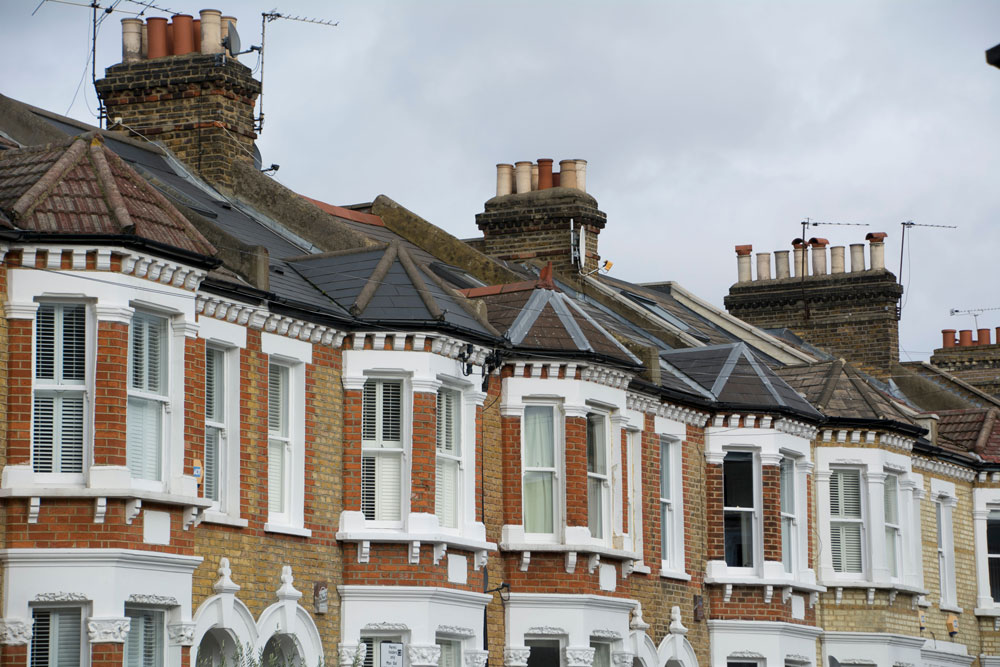How To Clean A Victorian Building

CONTENTS
- What are Victorian bricks?
- Should you clean Victorian bricks?
- How to maintain a Victorian property
- What to do if Victorian brick needs cleaning
- Get in touch
A Victorian home refers to homes built in England between 1837 to 1901 — during the reign of Queen Victoria. These homes are easily recognisable because of their unique features like bay windows, grey slate roofs, and pointed, projected porches.
Many of these buildings still stand strong because of the bricks used to make them, and they require constant maintenance like any brick home built today.
Here at ICE Cleaning, we can restore Victorian brick homes with our brick cleaning services. Our expert technicians can utilise the non-abrasive TORIK Stone Cleaning System and eco-friendly solutions to remove traces of dirt, grime, moss, and algae.
Read on to learn more about Victorian bricks and how to maintain your historic property.
What are Victorian bricks?
Before the 1870s, homes were built with soft and porous Yellow Stock bricks. Then, Oxford Clay red bricks were re-introduced for constructing the homes of high-class individuals. You can identify a Victorian house by the type of bond it uses which was typically a Flemish Bond pattern.
The bricks and materials used in Victorian-era homes are incredibly sturdy and of excellent quality, able to withstand extreme weather like most modern bricks. However, they still require a lot of care due to their age.
Historical Victorian properties can be protected by Historic England to potentially prevent demolition or extension work. These buildings require specialist brick cleaning services to maintain the quality of the Victorian brickwork.
Should you clean Victorian bricks?
Older homes require more maintenance and care than a newly built home would. Eventually, a Victorian house might need repointing where an expert will conduct a thorough structural survey.
This process may include removing old mortar, washing away dust and debris, and applying fresh mortar. However, when cleaning Victorian brick, we advise you do not attempt this yourself.
Harsh cleaning methods that include high-pressure cleaners and chemicals could damage the brick and leave it in a worse state than before. You may not be aware of the specific techniques needed to wash Victorian brick carefully and could damage it.
How to maintain a Victorian property
A Victorian home requires a regular cleaning schedule and a contractor specialising in maintaining historical or Victorian properties. Preserving the aesthetics and foundations of the home can be a rather costly and time-consuming job, but this is integral to meeting the safety standards of a home.
Exterior Features
The most noticeable quality of a Victorian home is the unique features that decorate the exterior. Restoration may be difficult depending on age where paint has peeled away, or parts of decoration have come apart. Replacing the original features may also prove difficult and costly, but the value will increase.
Foundations
Victorian-era homes are close to the ground and the small foundations often contain sand. Due to how low these are, moisture can build up in the concrete and cause erosion and water damage. The integrity will require assessment often to avoid cracking or breakages.
Pipework
Unfortunately, many old homes had pipe systems that were made from lead to avoid rusting and corrosion. It is integral to your health that you check the pipework before using or consuming any water in your home. These might need replacement, which can be an expensive job.
Roofing
Victorian slate roofs made with iron nails and slate will eventually deteriorate and split. It may require a complete replacement or extensive maintenance work, therefore needing excessive upkeep.
What to do if Victorian brick needs cleaning
If your Victorian or historical property requires cleaning, you must not attempt to do this yourself. The job is laborious and requires full PPE, industrial scaffolding, and potentially elevating work platforms.
Specific techniques, tools, and industrial chemical solutions may be needed to maintain the integrity and prevent mortar from coming loose during the process. If the property has multiple storeys, you will need qualified brick cleaners who can work at height safely.
It is recommended that you hire specialists who understand the skills, techniques, and care required for cleaning bricks on historical or Victorian property.
Get in touch
Our specialist cleaners understand the delicacy and effort needed to clean Victorian brick effectively. Here at ICE Cleaning, we offer thorough brick cleaning services to help maintain a historical or Victorian building. Our technicians are available around the clock, nationwide, 365 days a year.
If you want to know more about our brick and stone cleaning services, get in touch with our team at 0208 066 0360 or enquiries@icecleaning.co.uk.

Speak with me today,
I’m here to help
By asking you a few questions either via phone or email I can immediately provide a realistic estimation of the cost.
You’re in good company. We’ve cleaned for the following commercial clients… View all

Why choose us?
- Cater to a wide variety of cleaning situations
- Nationwide coverage, available 24/7
- Cater to commercial and domestic clients
- Free survey provided prior to quotation
- Emergency response team
- Offer a bespoke service designed to suit all your needs
- All technicians hold professional health and safety qualifications, including BICSc, IOSH, Dewpoint Professional & Safe Contractor
We’re fully accredited
We place best practise, professional expertise and health and safety at the core of our business. We’re fully compliant with all legal obligations. You can view a list of our accreditations below, or visit our Health & Safety page for more information.











-RGB-small.1707319151.jpg)




















